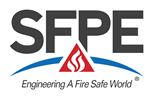Abstract
An investigative study was performed using the experimental data from a full-scale test on a BS84141:2015 [1] fire test rig in the UK The BS8414-1:2015 test is a fire test method for external façade systems where a fire is simulated to have breached through an orifice such as a window and then spread up the external face of a building Here, the reference test case is an assessment of an external walling system that was carried out by the British Research Establishment (BRE) and was commissioned by the UK authorities (Department for Communities and Local Government, DCLG) as part of the more comprehensive, post-incident investigation into the Grenfell Tower fire In June of 2017, a full height fire occurred at the Grenfell Tower, a residential building in the Borough of Kensington, West London The study here designed a model in Computational Fluid Dynamic software (Fire Dynamics Simulator (FDS 6.2.0) [2]), applying the following surface backing inputs to the FDS model; SURF BACKING=’INSULATED’, SURF BACKING=’EXPOSED’ and SURF BACKING=’VOID’ The temperature profile given in the report of the original BRE-DCLG Fire Test data is replicated in FDS 6.2.0 and the different FDS input backing settings compared The BRE-DCLG report gives temperature readings at different depths within the material, allowing a comparison in FDS with the conductive heat transfer This project forms part of a continuing research project being conducted at the University of Leeds to computer model external fire spread in tall buildings.
Presentation
Resources
| Paper | Presentation | ||
|---|---|---|---|
| HTML | HTML | ||
| Resources Archive File (.zip) | |||


